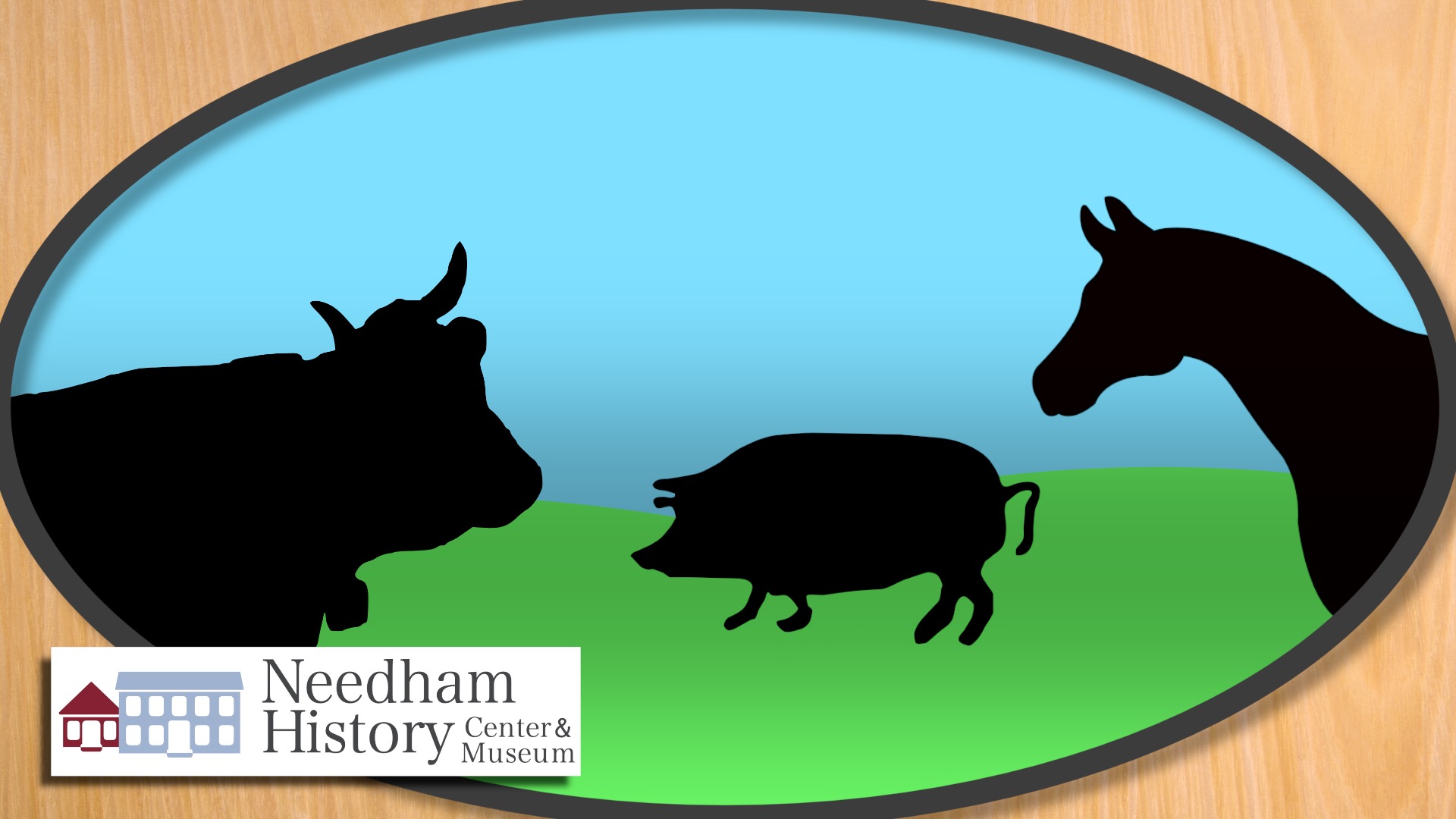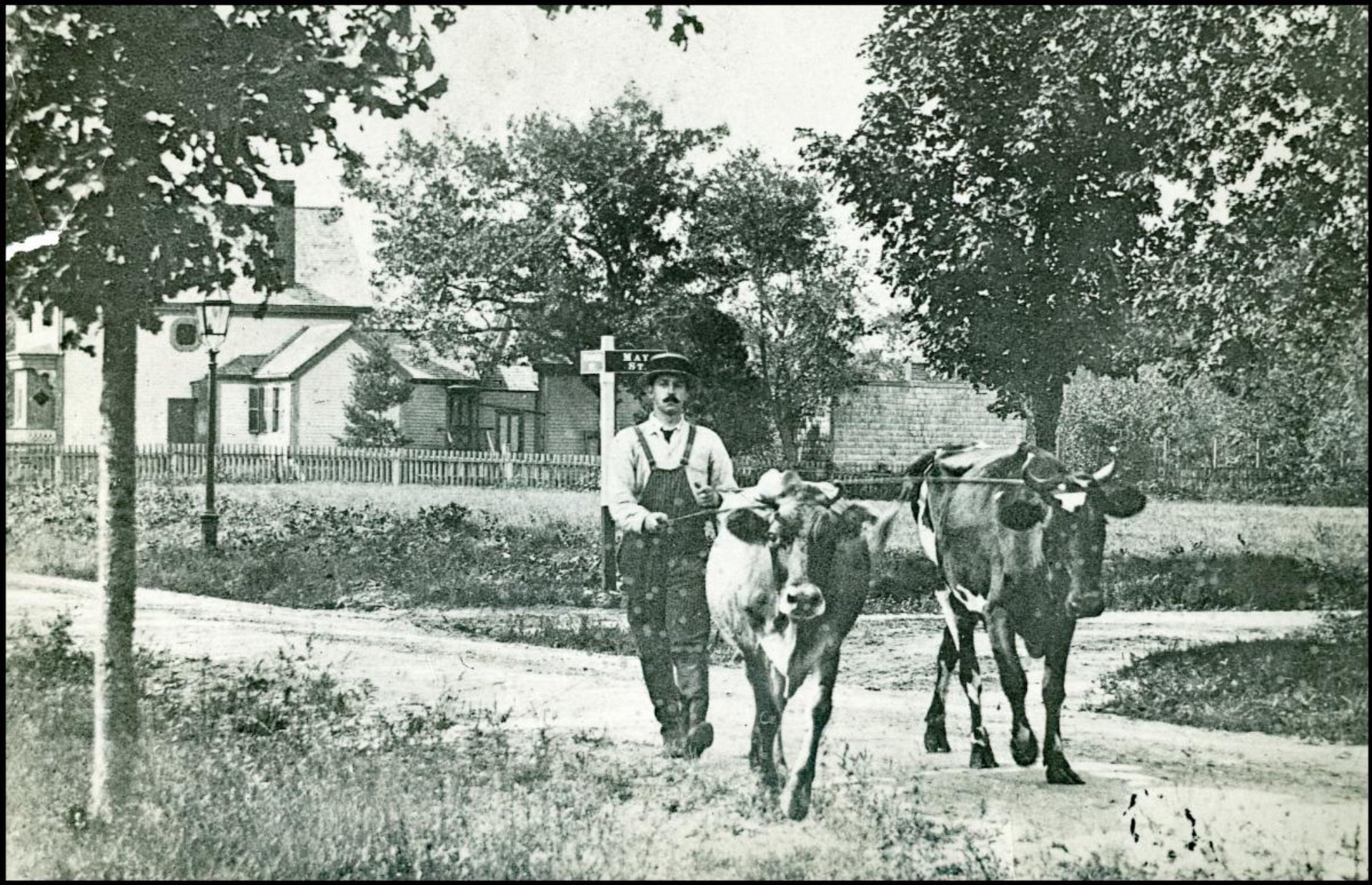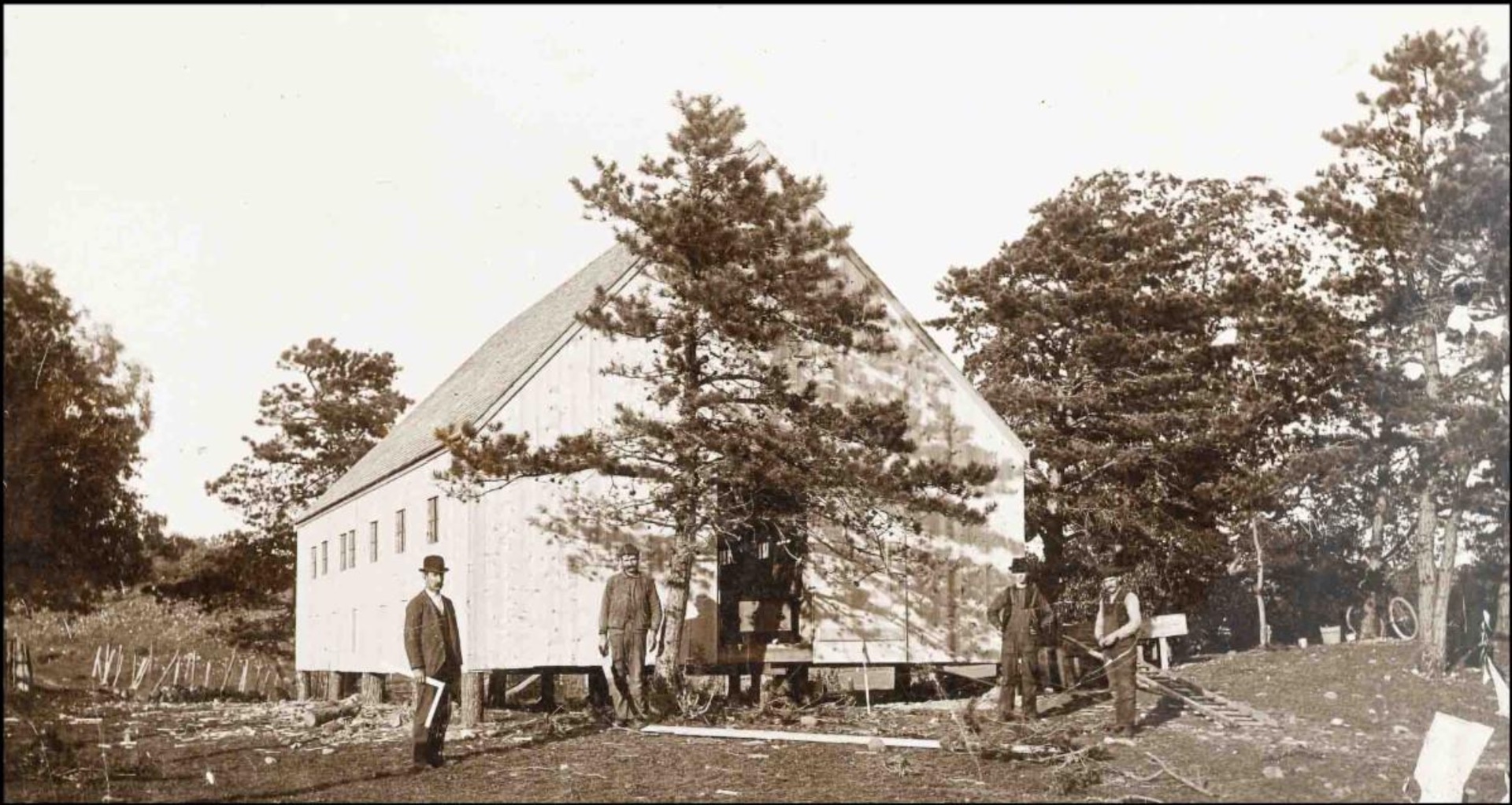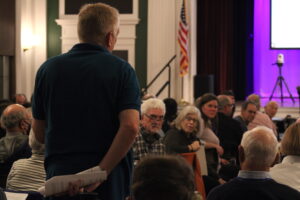
Needham History: A Rite of Passage
“Cattel Should feed on the Roads and Commons in the Town.”
Or not.

Howard Tisdale walks his cows in 1895, on Webster Street at the intersection of May Street. The Tisdales owned several properties on this part of Webster Street, none of them large enough to house cattle. I am not sure where he is walking his cows to – possibly to grazing land along Greendale Avenue.
A Rite of Passage
I have been thinking a lot about wandering livestock this week, for reasons only semi-related.
The second reason was an inquiry from Peter O’Neil for a story he wrote for the Needham Observer. One of the Articles in Monday’s Special Town Meeting revoked or revised provisions in the Needham General Bylaw that were unclear or out of date – some of them way out of date. Among these was a bylaw that banned the grazing of animals on public land:
“3.1.1. No owner or persons having the care of any horses, cows, or other grazing animals shall permit or allow them to roam at large or to graze on any street, lane, common square or other public place within this Town, nor permit any such animal to roam or stand upon any sidewalk within the Town.”
Why, Peter wanted to know, was this even a thing? It seemed pretty clear that this bylaw, which was going to be deleted, was no longer necessary – but why was it ever necessary?
It’s hard to be certain, but it’s likely the answer goes all the way back to Needham’s earliest days as a town, and the communal rights of common. “Common land” in a colonial community was land that was either unclaimed, unimproved, or designated for common use (those who used it were known as “commoners.”) This was a cherished and valuable resource, because it was basically free food for your livestock. The more your cattle could graze on the commons, or your pig could root and forage in the woods, the less fodder you would have to provide. Plus, it was a healthier diet – fresher and more varied. The availability of good grazing land was one of the main reason that Dedham settlers began to claim land north of the Charles River (eventually, Needham). Town Meeting reiterated this right in 1779 by affirming that “Cattel Should feed on the Roads and Commons in the Town.”
Roads and Commons. Not private property. This is possibly the origins of the modern grazing bylaw. In 1800, only a few years later, Town Meeting passed a law prohibiting “Neat Cattle and horfes and horse kind” from wandering at large “without a Keeper.” This prohibition was in force from May through October – the months between planting and harvest, to protect the crops. The law was renewed annually for the next fifty years, and expanded to eventually include the full year. By that point, your livestock had to pretty much remain on your property, and the rights (and probably availability) of common grazing became increasingly limited.
These limitations probably reflect the growing population of Needham (which doubled during this period, to about 1900 people) and the corresponding growth in private farmland over wasteland and common. Dairy was the main agricultural enterprise in Needham, which had poor cropland but great grazing land. This was true well into the 20th century, with numerous Needham dairy farms operating until the 1950s. The law probably hung on in some form because there was still a significant cow population. And then we just forgot it was there.
In the 18th and 19th centuries (and later?) there were town officials responsible for enforcing this law by impounding stray livestock and assessing the cost of any damages they caused. These were the Field Drivers; they drove the errant critters to the Town Pound (on Great Plain Avenue, near what is now Olin College) to hold until the owner could pay the fine and reclaim them. Hog Reeves were a special class of field drivers, with particular responsibility for the prevention or appraising of damages by stray swine. This was a significant concern, since hogs are destructive and clever, and when allowed to run free to forage would often find their way into the kitchen garden or turnip patch.
Henry Blackman builds his new piggery in 1893, on Greendale Avenue near the intersection of Great Plain Avenue. Although there was a significant livestock population in Needham well into the 20th century, the laws increasingly restricted their housing and maintenance as the town became more residential and populous.

Which brings me to my first reason. Writing about Dr. Mary Hobart a couple of weeks ago inspired me to re-read Laurel Thatcher Ulrich’s excellent book, The Midwife’s Tale. Her discussions of the various themes and details of Martha Ballard’s 18th century diary provided me with many new insights into what life in colonial Needham was like, and some of these will no doubt find their way into future columns. But one that struck me right away was her observation that the job of hog reeve was given to the newly-married men.
I had not heard that before, but she cites several sources, and some quick research of my own found several more. This actually makes sense. Hog reeve is a hard job; pigs are fast, strong, and dangerous. Wrangling them would be a job for the young and able-bodied in any case. But also, marriage was an important rite of passage. Yes, in the personal and family sense, as a man sheds the subordinate role of Son and takes on the primary responsibility of Husband (which, at its root, means “house-holder”). But also in the community sense – a young man would join the militia at 16, and assume rights of adulthood at 21, but until he married and set up his own housekeeping he was not really a full member of the community.
By establishing a household, a man took his place among all of the rights and responsibilities of community membership. Part of that was the annual round of offices and tasks appointed each year in Town Meeting. This usually meant starting at the bottom with the least-popular jobs, like hog reeve. With this appointment also came the inevitable and time-honored chaffing of older men to the newly-married – the wandering bachelor was now himself corralled, like the swine he would pursue.
I was of course curious if this was also true in Needham – were the newlyweds appointed as hog reeves? Good old Clarke, in his History of Needham, actually lists all of the hog reeves appointed between 1719 and 1776, by year. I compared this list to the list of recorded 18th century Marriage Intentions, and to the Births and Marriage lists. I looked at 1728 through 1750, because these were the years that were covered by all three sources (plus, it’s tedious work).
For this period, there were 37 men appointed as hog reeve, usually two per year. Of these, I could find that at least 25 – 68% of them – were either newly married or had just had their first child. Since couples in the 18th century often did not complete the marriage ceremony until after the woman was pregnant, this two events can basically be considered the same. There were a couple of notable exceptions. Nathaniel Ware was first appointed in 1730, the year his twins Nathaniel Jr and Esther were born, but also another 6 times over the next 22 years. Similarly, Thomas Ockington had five appointments over 17 years after the birth of his first daughter, Susanna. A more tragic confirmation of this pattern – Samuel Richardson was appointed in 1750 after the birth of his twins Samuel Jr and Ebenezer. This was his second appointment; he was appointed in 1748 after the birth of his first son Samuel, but declined to serve when the infant died.
The newly-married men of Needham can now relax – with no significant livestock economy, they can rest easy that no one will task them with chasing down errant pigs. There is, however, a significant community responsibility that they (and their wives, neighbors, friends!) can and should assume – participate in Town Meeting. The cattle-grazing Warrant item may have been an historical quirk, but the important work of Town Meeting has, for 312 years, been crucial to the sound and democratic governance of our town.
 |
Gloria Polizzotti Greis is the Executive Director of the Needham History Center & Museum. For more information, please see their website at www.needhamhistory.org. |

